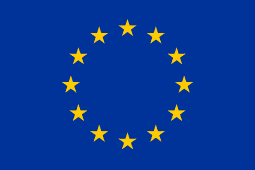Supermoon 2016 Photography Tips

The full moon of November 14, 2016 is not only the biggest, closest and brightest supermoon of this year. It’s the closest supermoon in 68 years since January 26, 1948. It will be another 18 years before it’s this big again.
The same side of the moon always faces the planet, but part of it is in shadow. And, in reality most of the time the "full moon" is never perfectly full. Only when the moon, Earth and the sun are perfectly aligned is the moon 100 percent full, and that alignment produces a Lunar eclipse.

On Dec 13 2016 at 7:05 p.m. EST, you can catch another full moon.
Full moons calendar in 2016, according to NASA:
|
Date |
Name |
U.S. East |
UTC |
|
Jan. 23 |
Wolf Moon |
8:46 p.m. |
01:46 (1/24) |
|
Feb. 22 |
Snow Moon |
1:20 p.m. |
18:20 |
|
Mar. 23 |
Worm Moon |
8:01 a.m. |
12:01 |
|
Apr. 22 |
Pink Moon |
1:24 a.m. |
05:24 |
|
May 21 |
Flower Moon |
5:15 p.m. |
21:15 |
|
June 20 |
Strawberry Moon |
7:02 a.m. |
11:02 |
|
July 19 |
Buck Moon |
6:57 p.m. |
22:57 |
|
Aug. 18 |
Sturgeon Moon |
5:27 a.m. |
09:27 |
|
Sept. 16 |
Harvest Moon |
3:05 p.m. |
19:05 |
|
Oct. 16 |
Hunter's Moon |
12:23 a.m. |
04:23 |
|
Nov. 14 |
Beaver Moon |
8:52 a.m. |
13:52 |
|
Dec. 13 |
Cold Moon |
7:05 p.m. |
00:05 (12/14) |
There are many vantage points on Earth to shoot a supermoon. Some professional photographers offered tips on how to position yourself (and your camera) for the best shot.
- Find the biggest lens you can and then add a teleconverter lens.
- Make the image creative. Include a landmark or some land-based object in the picture. Seeing it near the horizon with structures like buildings, trees, or mountains for scale plays a trick on the mind that makes the moon seem slightly bigger.
- Shoot with the same exposure you would in daylight on Earth, since it’s technically daylight on the moon Leaving your shutter open too long will result in an overexposed moon that’s too bright, with no lunar detail.
- Minimize shaking with a tripod and remote shutter release control to get the sharpest image possible.
- Start by noticing the moon a few days before the supermoon. The path will be similar, and you can plan where and when to shoot.
The Kaiserburg castle in Nuremberg, Germany, 14 November 2016.

Among the fantastic supermoon by photographers worldwide, one stuck out above the rest:

The black shadows are the International Space Station (ISS) zooming in front of the supermoon.
Kris Smith, who took the image, told Business Insider in an email that he'd been researching the possibility of taking this shot "for several years using Calsky.com," a site dedicated to calculating unique chances to observe objects in space.
"[One] week before the ISS crossing I received an email alert and approximate path. The path was only about 2 miles from my house," Smith said. "As the day grew closer I picked a location, the local high school, and [set up] my telescope on the practice field."
He used an 11-inch telescope attached to a Canon 5D Mark III DSLR camera. Because the telescope's field of view was narrow and couldn't fit the full moon in a single frame, however, Smith had to track the ISS as it moved in front of the moon at the blistering pace of 17,500 mph.
More reading: How to set up Wireless Remote Function with Nikon P900’s Moon Scene Mode for Moon shooting









